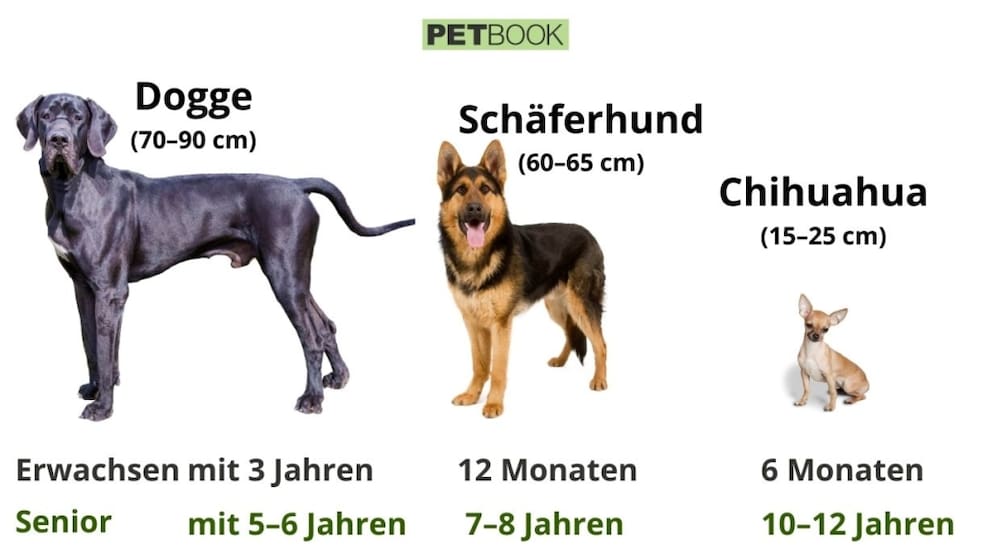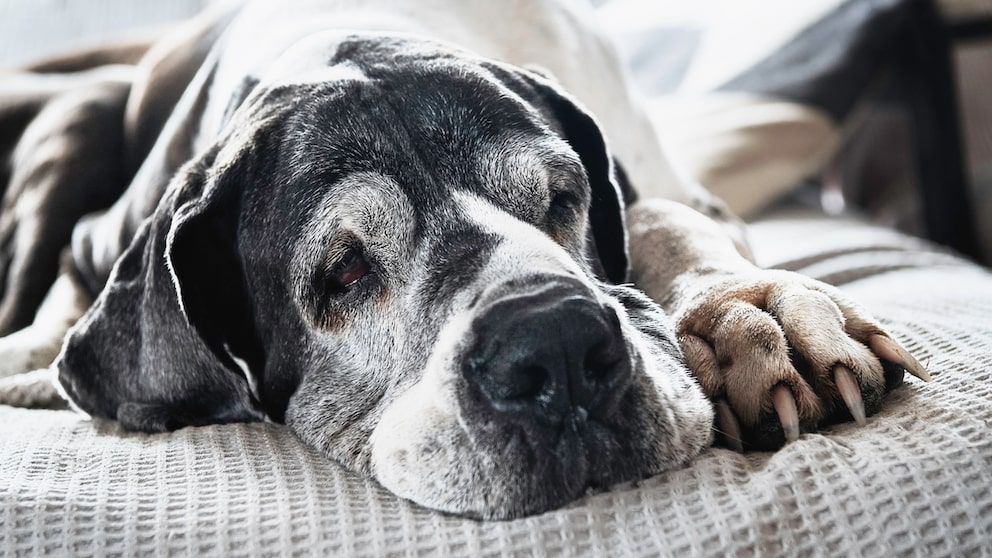August 22, 2024, 2:13 pm | Read time: 4 minutes
When a young, playful puppy moves in, thoughts of old age and possible ailments are far from your mind. However, like every living being, dogs also undergo an aging process that brings specific accompanying symptoms. When are dogs considered senior citizens, and how do they show signs of aging?
For humans, aging is usually accompanied by physical changes such as gray hair, wrinkles, and age spots. But what about our four-legged friends – especially our dogs? When do dogs become senior citizens, and what should owners bear in mind when their pets are getting old?
Overview
When is a dog a senior?
How quickly a dog ages and thus becomes a senior depends on various factors. For example, the breed, size, weight, and individual state of health of the animal play an important role. In general, it can be said that the larger a dog is, the faster it ages. Large breeds such as the Great Dane and the Irish Wolfhound can be considered senior from age five or six.
Smaller dogs like the Bichon Frisé or the Miniature Poodle have a longer life expectancy than their larger counterparts. They only become seniors at around eight years of age. However, chronic diseases such as diabetes or kidney problems can accelerate the dog’s aging process. The ages given are, therefore, only rough guidelines. If you want to know whether your dog is already showing the first signs of aging, you should make an appointment with your vet.
Why do large dog breeds age faster?

While a Chihuahua is not considered a senior until it is over 10 years old, particularly large breeds such as Great Danes reach old age at six. But why is that? Scientists suspect that the growth process plays a role here.
Large-breed puppies gain weight and size rapidly during their first few years. This enormous growth in size requires a lot of energy, so these dogs, therefore, have to eat a comparatively large amount. So-called “free radicals” are produced when the food is converted or broken down to obtain the necessary energy. In large quantities, these molecules can damage the body and accelerate the aging process.
How does aging become noticeable in dogs?
Aging dogs begin to change physically. Their coats become lighter in color, especially around the muzzle or all over the face. Many senior dogs are no longer as active as they used to be. They move less as their muscles weaken and their joints wear out. The lack of exercise can lead to obesity despite a reduced appetite. Sensory functions such as hearing and vision can deteriorate in old dogs, and their susceptibility to infections increases.
But it’s not just the animal’s appearance that changes, its behavior does too. Senior dogs can develop a certain stubbornness that is often misinterpreted as disobedience. Some of them also no longer like to cuddle, their memory deteriorates, and their ability to learn decreases. Incidentally, dogs can also develop dementia. Vets refer to this as canine cognitive dysfunction syndrome (CDS). This progressive disease of aging dogs can cause symptoms such as disorientation, restlessness, and loss of house training.
Also interesting: Recognizing dementia in dogs and acting correctly

Study proves This factor has the greatest influence on a dog’s lifespan

Staying mobile in old age What you should bear in mind when exercising with older dogs

Important decision Should I get a second dog? A dog trainer’s advice
Does senior dog food make sense?
It is best to discuss with your vet which food is recommended for your aging pet. If your dog is still fit and active as a senior, there is nothing to stop you from giving him his usual food. If the first signs of aging are already apparent, such as a tendency to become overweight, you can consider changing your dog’s food. High-quality senior dog food is adapted to the animal’s changed energy and nutrient requirements and may now make sense.
Offering senior dogs a calm environment with fixed routines is also important. However, aging animals not only need a fixed daily routine with set feeding and walking times. They also need their owner’s understanding if some things no longer work as well as they used to and a few drops of urine or a small pile end up on the carpet.12

